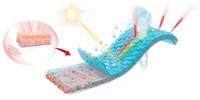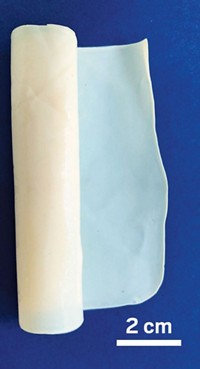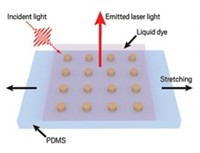Advertisement
Grab your lab coat. Let's get started
Welcome!
Welcome!
Create an account below to get 6 C&EN articles per month, receive newsletters and more - all free.
It seems this is your first time logging in online. Please enter the following information to continue.
As an ACS member you automatically get access to this site. All we need is few more details to create your reading experience.
Not you? Sign in with a different account.
Not you? Sign in with a different account.
ERROR 1
ERROR 1
ERROR 2
ERROR 2
ERROR 2
ERROR 2
ERROR 2
Password and Confirm password must match.
If you have an ACS member number, please enter it here so we can link this account to your membership. (optional)
ERROR 2
ACS values your privacy. By submitting your information, you are gaining access to C&EN and subscribing to our weekly newsletter. We use the information you provide to make your reading experience better, and we will never sell your data to third party members.
Materials
Nanotubes Create Darkest Dark Material
January 21, 2008
| A version of this story appeared in
Volume 86, Issue 3
Materials science has a dark side. Researchers report that they have made the world's darkest material from a low-density, vertically aligned array of carbon nanotubes (Nano Lett., DOI: 10.1021/nl072369t). The material's total reflectance of 0.045% is three times lower than that of a phosphorus-nickel alloy that was previously identified as the world's darkest substance, and it's more than 30 times darker than the standard black benchmark used by the National Institute of Standards & Technology. A team led by Shawn-Yu Lin of Rensselaer Polytechnic Institute and Pulickel M. Ajayan of Rice University prepared the near-perfect black material. Carbon nanotubes are known to be good at adsorbing light, but the material's engineering also enhances the nanotubes' inherent blackness. The researchers hypothesize that when arranged in a low-density array, the deep pores between the tubes act as a light trap. Nanoscale surface roughness also keeps reflection to a minimum. If the material behaves similarly toward ultraviolet and infrared radiation, it could be used as a stealth coating for defense and other applications.





Join the conversation
Contact the reporter
Submit a Letter to the Editor for publication
Engage with us on Twitter